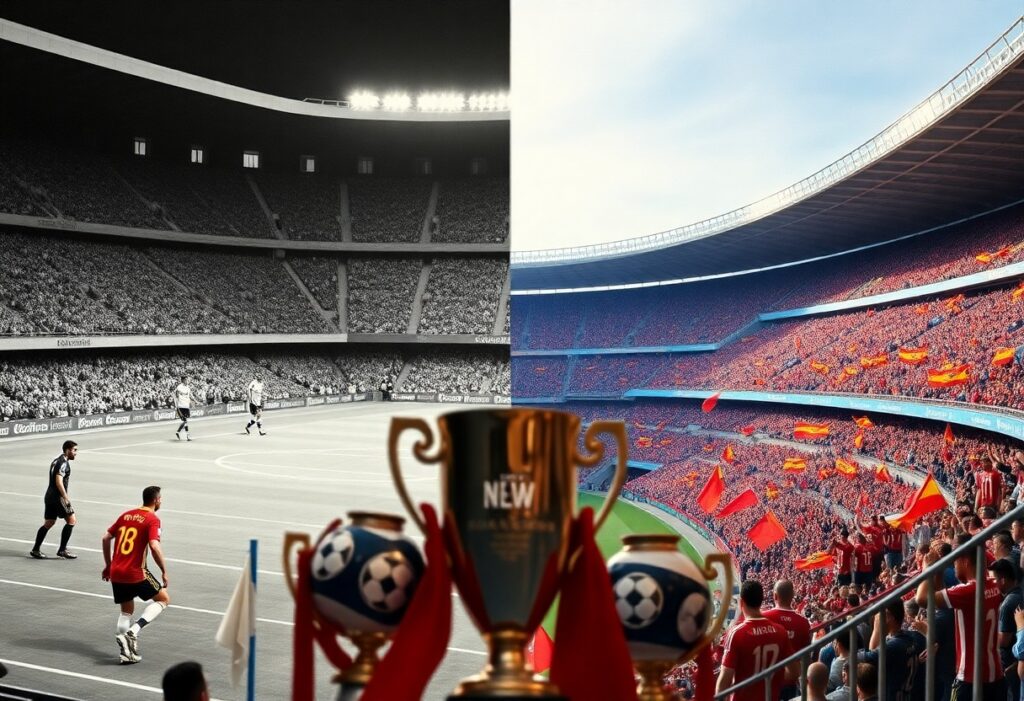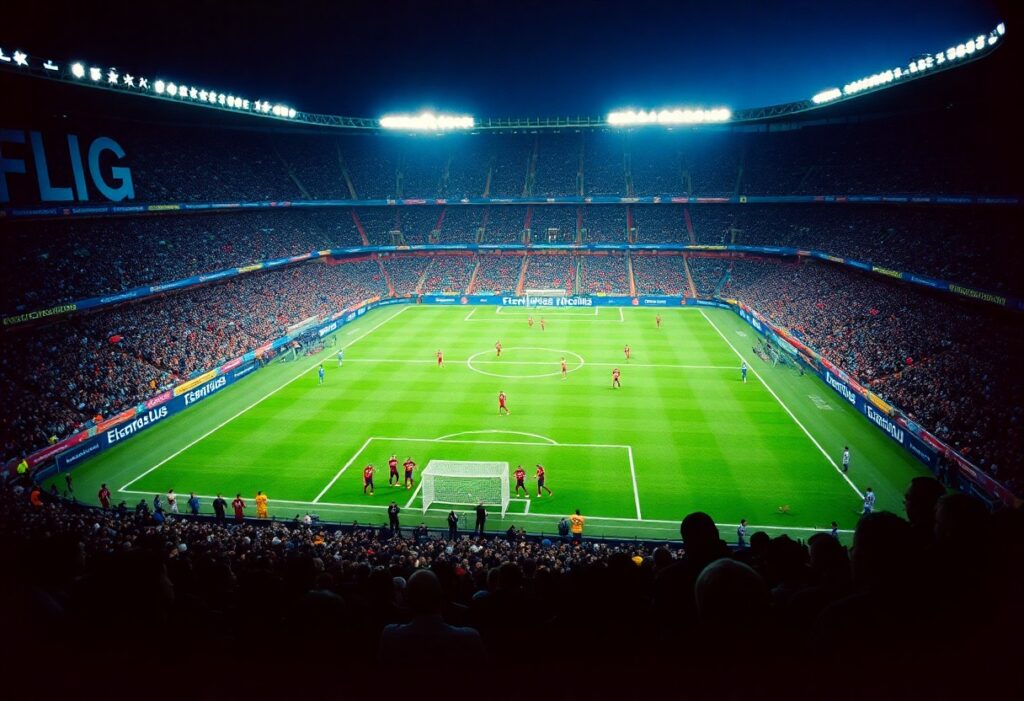
You will discover how youth academies serve as the backbone of La Liga, shaping the future of Spanish football. These academies nurture young talents, instilling not only technical skills but also tactical understanding and a strong club identity. As clubs like FC Barcelona and Real Madrid invest heavily in these programs, they ensure a steady stream of skilled players who elevate the league’s overall quality and global appeal. Consequently, youth academies are not just training grounds; they are pivotal in maintaining La Liga’s dominance on both national and international stages.
Historical Context of La Liga
La Liga was established in 1929, marking the beginning of a new era for Spanish football. Originally featuring just ten teams, its inaugural season saw FC Barcelona secure the first title. The competition’s format embraced promotion and relegation, quickly elevating its status and drawing significant attention throughout Spain and Europe.
Growth of Professional Football in Spain
Throughout the mid-20th century, professional football in Spain experienced rapid expansion, with La Liga gaining traction as a premier league. By the 1950s, clubs like Real Madrid began to dominate, not only achieving national glory but also excelling in European competitions. This success laid the foundation for increased investment and development within the sport, fostering talent and attracting top players globally.
The 1950s marked a significant transformation in Spanish football, as La Liga clubs began to harness their financial potential. Real Madrid’s five consecutive European Cup titles from 1956 to 1960 showcased the league’s rising prominence on the continental stage. This period not only brought heightened competition domestically but also encouraged infrastructural improvements across clubs. Facilities were upgraded, and talent scouting expanded, leading to a deeper pool of players. As a result, more youth academies were established, nurturing local talents and ensuring a continual supply of skilled players that would drive La Liga’s legacy forward. The melding of burgeoning fan passion and increasing financial resources created a fertile ground for the league’s future success.
The Structure of Youth Academies
Each youth academy in La Liga operates under a structured framework designed to nurture talent from a young age. This includes a focus on technical skills, tactical understanding, and physical development. Players often start their journey in local clubs before being scouted and recruited by larger academies. The integration of psychological and emotional training is also becoming increasingly common to prepare young athletes for the pressures of professional football.
Overview of Prominent Youth Academies
Barcelona’s La Masia and Real Madrid’s La Fábrica are two of the world’s most renowned youth academies, each boasting an impressive history of producing elite players. La Masia has birthed legends like Lionel Messi and Xavi, while La Fábrica has launched stars such as Raúl and Iker Casillas. These academies emphasize not only skill development but also a club’s unique playing philosophy, reinforcing identity and culture through their extensive training programs.
Development Pathways for Young Players
Young players in La Liga are guided through structured pathways tailored to facilitate their growth and progression. Starting in lower division teams, they gradually ascend through various age groups, often training alongside senior professionals. This method ensures they gain both experience and exposure to different styles of play, with many clubs integrating competitive fixtures and training camps to further enhance their skills.
Players typically progress from local youth teams to the club’s youth academy, receiving specialized training at each level. Talented individuals often participate in regional and national competitions, showcasing their abilities to scouts and coaches. Clubs in La Liga frequently prioritize the development of not just technical skills but also mental resilience and teamwork. The aim is to create well-rounded athletes who can seamlessly transition to first-team football, as seen with numerous young talents making their debut in high-stakes matches. This structured approach fosters a continuous talent pipeline imperative for La Liga’s long-term success and competitive edge in European football.
Talent Identification and Recruitment
Talent identification and recruitment are integral to the success of youth academies in La Liga, as clubs strategically invest in scouting systems to unearth future superstars. Through a combination of analytics and traditional scouting methods, clubs identify young talents not only within Spain but also from diverse regions across the globe, ensuring a broad pipeline of skills and potential that keeps their teams competitive.
Scouting Processes
The scouting processes employed by La Liga clubs vary widely, often involving complex algorithms and comprehensive databases to track player performance metrics. Clubs like FC Barcelona and Real Madrid utilize extensive networks of scouts who cover grassroots tournaments and youth leagues, pinpointing talents with skills that fit their playing philosophies.
Partnerships with Local Clubs
Partnerships with local clubs enhance talent pipelines for La Liga academies, establishing a strong foundation for future player development. These collaborations often involve talent exchanges, shared training resources, and knowledge transfer, ultimately fostering a community of players who thrive in a supportive environment.
For instance, clubs like Atlético Madrid have established formal relationships with local teams, allowing their coaches to train and mentor younger players while identifying talents early. These connections not only streamline player progression into the professional ranks but also build loyalty within local football communities, ensuring a steady influx of skilled athletes into La Liga’s elite academies.
Training Methodologies
Coaching Techniques and Philosophy
Youth academies in La Liga emphasize a holistic approach to player development, integrating psychological, technical, and physical training. Coaches adopt methodologies inspired by renowned figures such as Johan Cruyff, prioritizing possession-based football that encourages creativity and decision-making on the field. Regular workshops and seminars ensure that coaching staff remains updated on the latest trends and best practices in youth training.
Focus on Technical and Tactical Development
Technical skills are honed through intensive drills and match simulations, enabling young players to master ball control, dribbling, and shooting under pressure. Tactical understanding is equally important, with academies implementing game analysis sessions to familiarize players with various formations and strategies.
In La Liga youth academies, the emphasis on technical and tactical development involves structured training sessions that blend skill drills with tactical awareness. For instance, players practice specific scenarios that mimic high-pressure situations, promoting quick decision-making and adaptability. This dual focus prepares young athletes not only to excel individually but also to understand their role within the team framework, as seen in the success stories of players emerging from these systems who seamlessly transition into professional environments.
Success Stories from Youth Academies
The impressive impact of youth academies in La Liga can be attributed to a series of standout players who have risen through their ranks, becoming vital assets for their teams and exemplifying the quality of training and development available. Clubs like FC Barcelona and Real Madrid have produced generations of talent that not only excel domestically but also shine on international stages, showcasing the effectiveness of their training methodologies.
Notable Players and Their Impact
Lionel Messi, Raúl González, and Fernando Torres have not only achieved remarkable individual success but have also significantly influenced their clubs’ successes in both La Liga and European competitions. This generation of players has shaped modern football and highlighted the effectiveness of youth systems in identifying and nurturing talent from a young age.
Case Studies of Successful Academies
- FC Barcelona’s La Masia: Produced over 20 players who reached the professional level, contributing to 30 major trophies since 2000, including 4 UEFA Champions League titles.
- Real Madrid’s La Fábrica: Developed 16 players who made significant first-team appearances, winning 20 La Liga titles over two decades.
- Valencia CF’s Academia: Introduced 12 players to La Liga, achieving a top-four finish 8 times and securing 3 Copa del Rey titles.
Other leagues have also adopted robust scouting networks and recruitment strategies, continually attracting youth players with lucrative contracts and enhanced visibility. For instance, Bundesliga clubs like Borussia Dortmund and RB Leipzig have made headlines by prioritizing youth development and investing in their academies, thus creating attractive alternatives for young players. With the rise of these potent rivals, La Liga must adapt its youth academy strategies to retain its competitive edge and ensure local talent remains rooted within the league.
Summing up
With this in mind, youth academies serve as the backbone of La Liga’s ongoing success by nurturing young talent and fostering a culture of excellence within clubs. These academies not only provide a steady stream of skilled players but also instill the values of teamwork and discipline crucial for professional growth. As a result, La Liga continues to thrive competitively while maintaining its reputation for developing homegrown talent, thereby ensuring its future sustainability and prominence on the global football stage.
Q: What is the primary function of youth academies in La Liga?
A: The primary function of youth academies in La Liga is to develop young talent through structured training, education, and competitive play, preparing them for professional careers in football. This focus on nurturing homegrown players has created a sustainable model for clubs and contributes significantly to the league’s overall success.
Q: How do youth academies impact the financial stability of La Liga clubs?
A: Youth academies offer financial stability to La Liga clubs by producing players who can either join the first team or be sold to other clubs for significant transfer fees. This reduces the need for costly player purchases and helps clubs rely on their own talent, promoting long-term financial health.
Q: In what ways do youth academies influence the playing style of La Liga teams?
A: Youth academies influence the playing style of La Liga teams by instilling a philosophy of technical skill, teamwork, and tactical understanding from a young age. This common approach ensures that players who graduate from these academies can seamlessly integrate into the senior squad, maintaining a consistent and recognizable style of play across the league.



